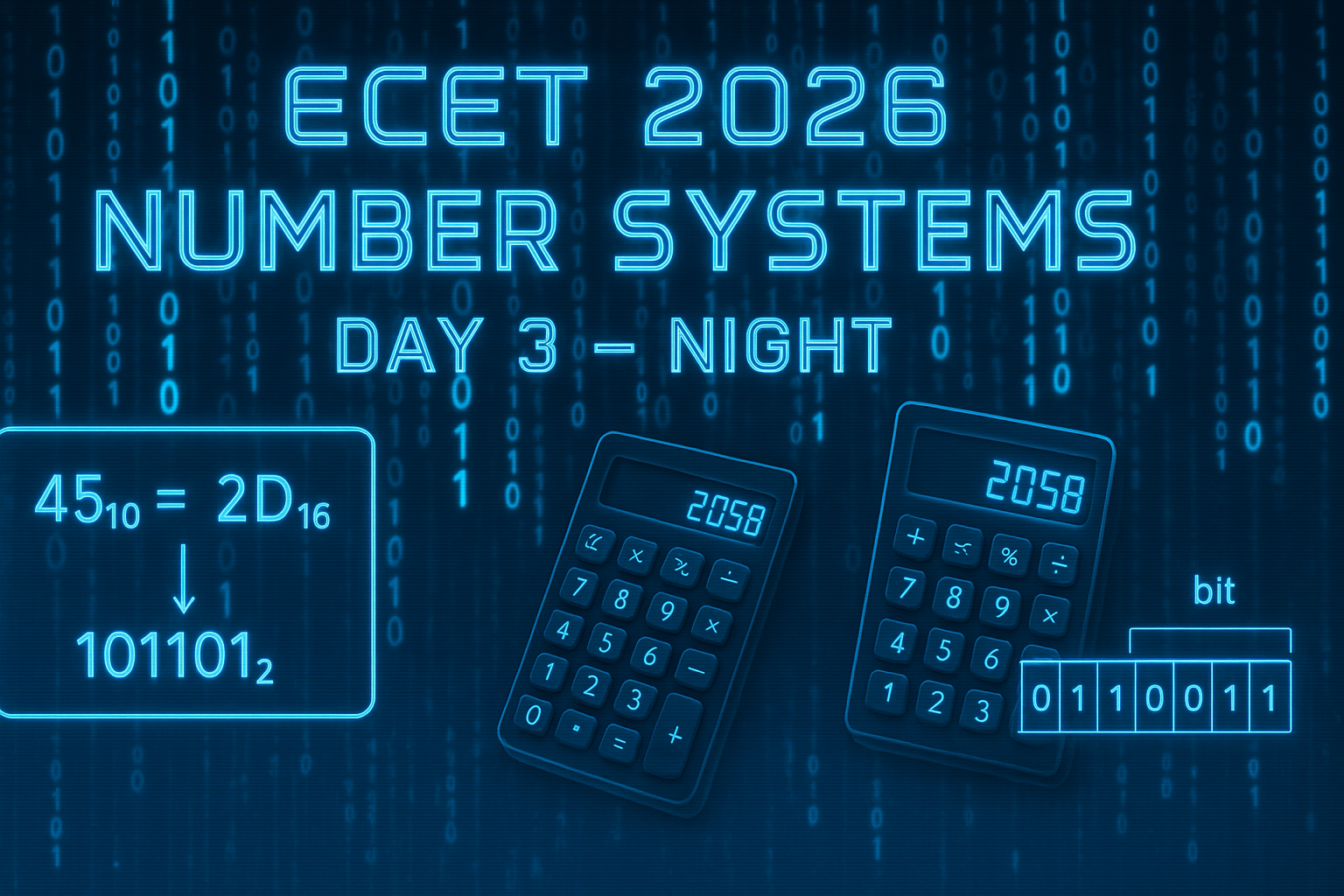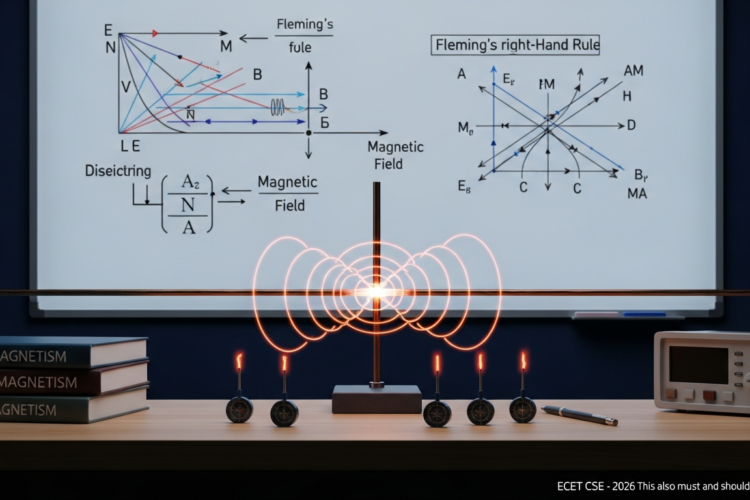
In ECET 2026, the Number Systems topic from Computer Organization and Microprocessor (COA) is one of the most fundamental and high-scoring areas. Questions on conversions, binary arithmetic, and number classifications frequently appear in the exam. If you’re aiming to boost your technical score quickly, mastering number systems is a must. Let’s go through key concepts, practice MCQs, and understand how to crack these questions with ease.
📘 Concept Notes – Number Systems in COA
🔢 What is a Number System?
A number system is a way to represent numbers using digits or symbols. It defines how we count, store, and compute values in computers.
📗 Types of Number Systems:
| Name | Base | Digits Used | Example |
|---|---|---|---|
| Binary | 2 | 0, 1 | 1010₂ |
| Octal | 8 | 0–7 | 17₈ |
| Decimal | 10 | 0–9 | 125₁₀ |
| Hexadecimal | 16 | 0–9, A–F | 1A₁₆ |
🔁 Conversions Between Number Systems:
- Decimal ↔ Binary: Divide by 2 or Multiply by 2
- Binary ↔ Octal: Group in 3 bits
- Binary ↔ Hexadecimal: Group in 4 bits
- Decimal ↔ Hexadecimal: Divide by 16 or Multiply by 16
➕ Binary Arithmetic:
- Binary Addition Rules:
- 0 + 0 = 0
- 0 + 1 = 1
- 1 + 1 = 10 (Carry 1)
- 1 + 1 + 1 = 11 (Carry 1)
- 1’s Complement: Flip all bits
- 2’s Complement: 1’s complement + 1
🔍 Key Concepts:
- Computers operate internally using the binary system.
- Hexadecimal is used for compact memory addressing.
- Signed numbers are represented using 2’s complement.
🔟 10 Most Expected MCQs – ECET 2026 [Number Systems]
Q1. What is the binary equivalent of decimal 13?
A) 1110
B) 1101
C) 1011
D) 1001
Q2. What is the decimal equivalent of binary 1011?
A) 9
B) 10
C) 11
D) 12
Q3. Which of the following is not a valid hexadecimal digit?
A) 9
B) F
C) G
D) A
Q4. 1’s complement of binary 1010 is:
A) 1010
B) 0101
C) 1001
D) 1111
Q5. How many bits are needed to represent the decimal number 255 in binary?
A) 6
B) 7
C) 8
D) 9
Q6. Which of the following numbers is in octal format?
A) 19
B) 88
C) 77
D) 1A
Q7. Binary addition of 1011 + 1101 equals:
A) 11000
B) 10110
C) 10000
D) 11110
Q8. What is the hexadecimal equivalent of binary 1101?
A) C
B) B
C) D
D) E
Q9. 2’s complement of 0001 is:
A) 1110
B) 1111
C) 0001
D) 1111
Q10. The base of the decimal number system is:
A) 2
B) 10
C) 16
D) 8
✅ Answer Key Table
| Q.No | Answer |
|---|---|
| Q1 | B |
| Q2 | C |
| Q3 | C |
| Q4 | B |
| Q5 | C |
| Q6 | C |
| Q7 | A |
| Q8 | C |
| Q9 | B |
| Q10 | B |
🧠 Explanations of All Answers
- Q1 → B: 13 in binary is 1101.
- Q2 → C: 1011 = 8 + 0 + 2 + 1 = 11.
- Q3 → C: G is not a hexadecimal digit (valid: 0–9, A–F).
- Q4 → B: Flip each bit of 1010 → 0101.
- Q5 → C: 255 in binary is 11111111 → needs 8 bits.
- Q6 → C: Octal uses only digits 0–7. 77 is valid.
- Q7 → A: 1011 + 1101 = 11000 (binary addition).
- Q8 → C: 1101 = D in hexadecimal.
- Q9 → B: 2’s complement of 0001 is 1111 (for 4-bit representation).
- Q10 → B: Decimal system is base 10.
🎯 Why This Practice Matters for ECET 2026
Number Systems questions are fast to solve and easy to master with a little practice. They help you secure at least 1–2 marks in COA section with high confidence. Practicing with MCQs improves speed and eliminates silly conversion mistakes. Perfect for last-minute revision and time-saving in the actual exam.
📲 Join Our ECET Prep Community on Telegram
Get more MCQs, PDFs, mini mock tests, and video explanations daily!
👉 @LearnNewThingsHub
Join thousands of ECET 2026 aspirants prepping smarter!



